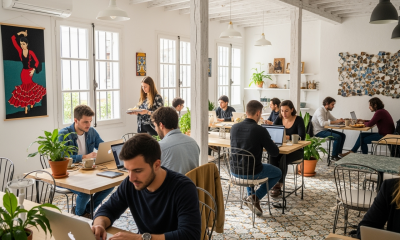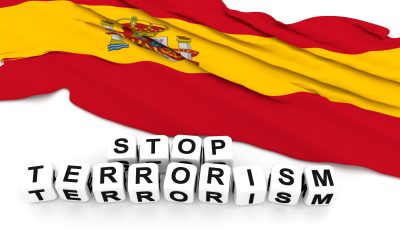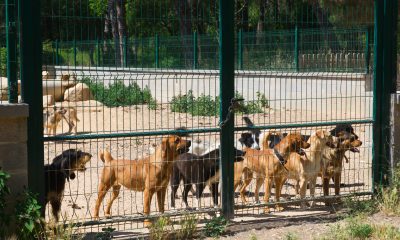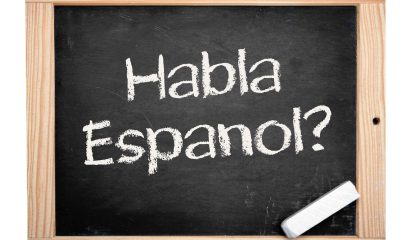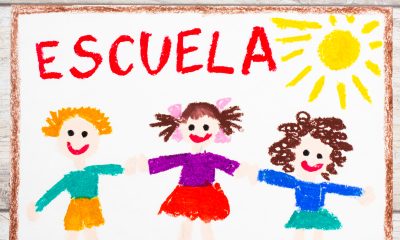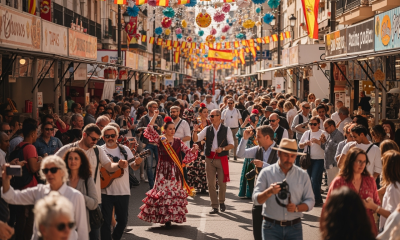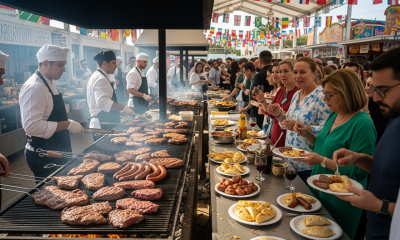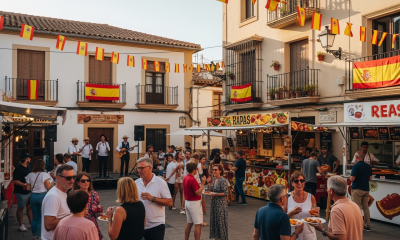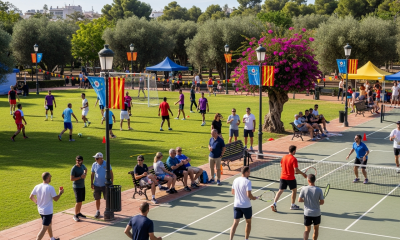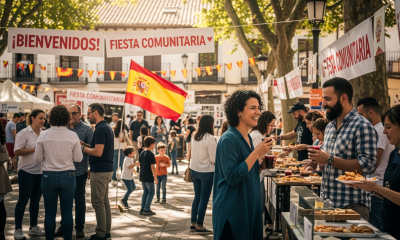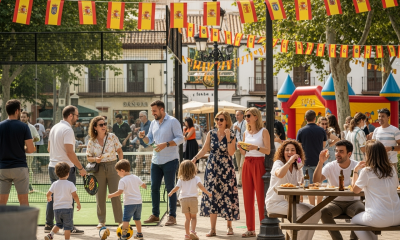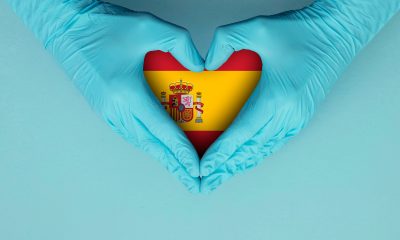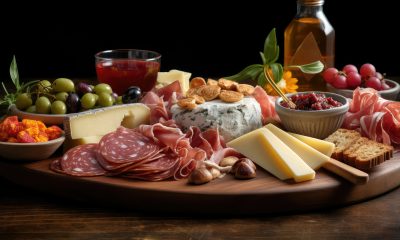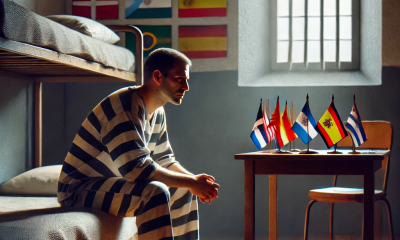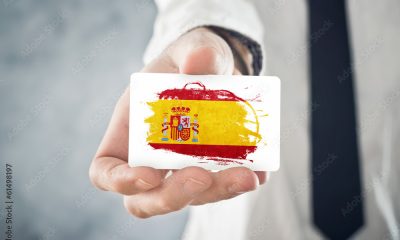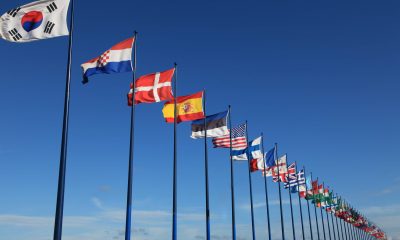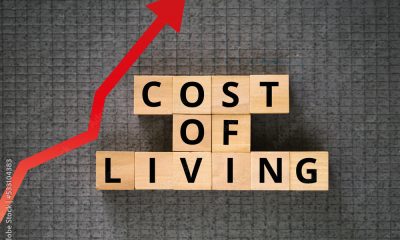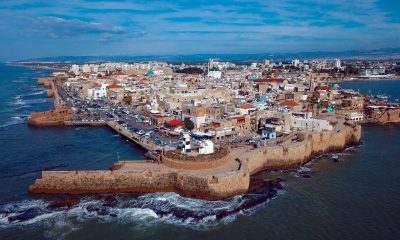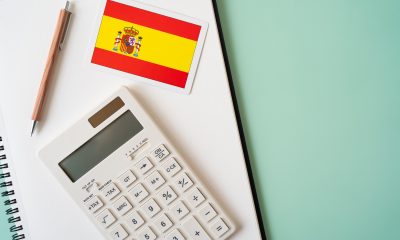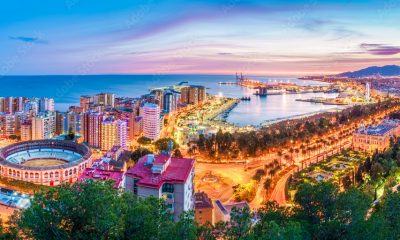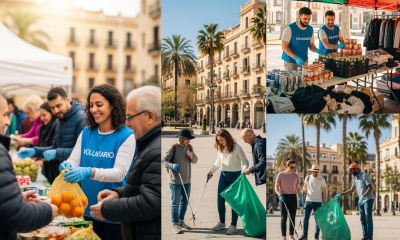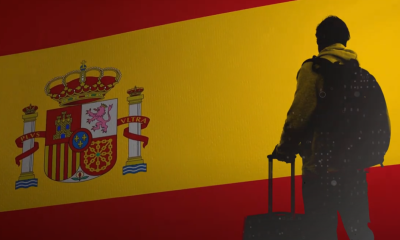Cultural
Rich Tapestry of Spanish Culture
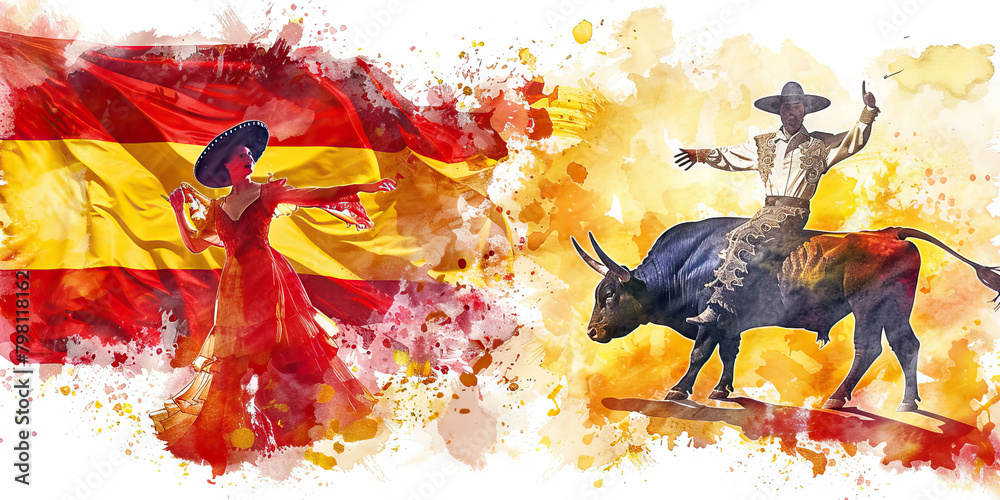
Spain, a country known for its vibrant traditions, diverse landscapes, and historical legacies, offers a cultural experience that is both deep and colorful.
From flamenco rhythms and tantalizing cuisine to architectural marvels and passionate festivals, Spanish culture captivates the heart and soul of anyone who immerses in it.
Here’s an exploration of the key elements that define Spanish culture.
Flamenco: The Soul of Spain
Flamenco is not just a dance; it is a profound expression of emotion.
Originating in Andalusia, this art form combines singing (cante), guitar playing (toque), dance (baile), and handclaps (palmas) to create a mesmerizing performance.
Flamenco tells stories of love, sorrow, joy, and resilience, and it remains an integral part of Spanish cultural identity.
Cuisine: A Culinary Journey
Spanish cuisine is renowned for its variety and flavor. Each region boasts its own specialties, but some dishes have achieved national acclaim.
Tapas, small plates of diverse foods, allow for sampling a range of flavors in one meal. Paella, a rice dish from Valencia, showcases seafood, meat, and vegetables cooked with saffron.
Jamón Ibérico, a type of cured ham, is a delicacy cherished across the country.
The Mediterranean diet, rich in olive oil, fresh vegetables, and seafood, underscores Spain’s culinary traditions.
Festivals: Celebrations of Life
Spain’s calendar is dotted with festivals that highlight the country’s exuberance and sense of community.
La Tomatina in Buñol is a chaotic and joyful tomato-throwing event that attracts participants from around the world.
Semana Santa (Holy Week), especially prominent in Seville, features solemn processions and religious ceremonies.
The Feria de Abril, also in Seville, is a week-long celebration of Andalusian culture with traditional costumes, flamenco music, and dancing.
Language: The Spanish Legacy
Spanish, or Castilian, is the official language, but Spain is home to several co-official languages including Catalan, Galician, and Basque.
These languages reflect the diverse regions and communities that make up the country.
The Spanish language itself is celebrated globally, not only as a means of communication but also as a vehicle for a rich literary tradition that includes luminaries like
Miguel de Cervantes and Federico García Lorca.
Architecture: A Historical Canvas
Spain’s architectural landscape is a testament to its diverse history.
Roman aqueducts, Moorish palaces, Gothic cathedrals, and modernist buildings like those by Antoni Gaudí coexist in a unique harmony.
The Alhambra in Granada, with its intricate Islamic art and gardens, and the Sagrada Familia in Barcelona, a still-unfinished masterpiece of Gaudí,
exemplify the country’s architectural grandeur.
Art: A Heritage of Creativity
Spain has produced some of the world’s most influential artists.
From the surreal works of Salvador Dalí and the abstract innovations of Joan Miró to the poignant masterpieces of Pablo Picasso, Spanish art has left an indelible mark on global culture.
Museums like the Prado in Madrid and the Guggenheim in Bilbao showcase these and other artistic treasures.
Sports: Passion and Pride
Football (soccer) is almost a religion in Spain, with La Liga being one of the most prestigious football leagues in the world. Clubs like FC Barcelona and Real Madrid have fan,
bases that span the globe. Beyond football, Spain is also passionate about basketball, tennis, and bullfighting, though the latter is increasingly controversial.
Traditions: A Blend of the Old and the New
Spanish traditions often blend ancient customs with contemporary practices.
The siesta, a mid-afternoon break, reflects a historical adaptation to the hot climate, though its prevalence is declining in modern urban areas.
Spain’s fiestas, local celebrations often honoring patron saints, bring communities together in a blend of religious devotion and secular merriment.
Conclusion
Spanish culture is a rich mosaic woven from various historical, linguistic, and regional threads.
It is a culture that values expression, celebration, and community, offering a welcoming and enriching experience to all who engage with it.
Whether through its passionate dances, flavorful foods, or festive traditions, Spain’s cultural heritage continues to enchant and inspire.
Cultural
Best Spanish festivals and how expats can participate (2025 edition)

Published: August 2025
Spain is world-famous for its vibrant festivals – from wild street parties to solemn processions and everything in between. For expats, joining in these celebrations is one of the best ways to experience Spanish culture, meet locals, and make lifelong memories. Here’s your guide to the most popular Spanish festivals in 2025, plus tips on how foreigners can join the fun.
Why festivals matter in Spain
Festivals (fiestas) are at the heart of Spanish life. Each town, city, and region has its own unique celebrations, often rooted in history, religion, or local traditions. These events bring communities together, break down barriers, and create unforgettable experiences for everyone – locals and newcomers alike.
Top Spanish festivals in 2025
- La Feria de Abril (Seville): A week of flamenco, horses, and casetas. Join in by renting a traditional costume and dancing until dawn.
- San Fermín (Pamplona): Famous for the running of the bulls. Expats can watch safely from balconies or join the parades and concerts.
- La Tomatina (Buñol): The world’s biggest tomato fight! Tickets are required – book early for 2025.
- Las Fallas (Valencia): Giant sculptures, fireworks, and street parties. Volunteer to help build a falla or join a local group.
- Semana Santa (nationwide): Dramatic Easter processions in cities like Málaga, Seville, and Granada. Respectful participation is welcome.
- Feria de los Países (Fuengirola): Celebrate global cultures with food, music, and dance – perfect for expats!
- Fiesta de San Juan (coastal towns): Bonfires and beach parties on the shortest night of the year. Bring friends and jump the flames for luck.
How expats can join in
- Check your local town hall or tourist office for festival dates and activities.
- Look for expat groups or language exchanges organizing group visits.
- Volunteer for setup or events – many festivals welcome extra hands.
- Respect local customs and dress codes, especially for religious events.
- Bring cash, comfortable shoes, and a sense of adventure!
Useful links
FAQ
Disclaimer: This article is for informational purposes only. Always check official sources for dates and details before attending.
Cultural
International Feria Fuengirola 2024: a celebration of cultures and community

International Feria Fuengirola 2024: a celebration of cultures and community
Published: August 2025
Every spring, Fuengirola on the Costa del Sol transforms into one of Spain’s most vibrant showcases of international culture. The International Feria Fuengirola—also known as Feria de los Países—brings together more than 30 countries for five unforgettable days of music, food, dance, and friendship. In 2024, the fairground once again welcomed tens of thousands of visitors, expats and locals alike, for a true celebration of diversity, unity, and joy.
A festival for everyone
The Feria is much more than just an event—it’s a living symbol of how people from all over the world can come together in Spain and create something unique. With more than 30 national pavilions, you can stroll from Spanish flamenco to Argentinian tango, from Finnish sauna culture to Peruvian ceviche, all in a single afternoon. The atmosphere is pure happiness: families, friends, and strangers laughing, dancing, and sharing experiences with almost no trouble or conflict—just five fantastic days of community spirit.
Highlights from around the world
Each country’s stand is a mini-embassy of culture. Spain’s own pavilion is always a crowd-pleaser, with regional food, live flamenco, and artisan crafts. The Argentinian stand draws crowds for its sizzling steaks and passionate tango shows, while Chile’s booth offers pisco sours and lively cueca dancing. Germany’s beer garden is a social hub, with bratwurst and folk music, while the UK and Ireland stands serve up fish & chips, Guinness, and live rock bands. Peru’s pavilion is a must for foodies, with ceviche and pisco cocktails, and Finland surprises many with smoked salmon, reindeer snacks, and even a pop-up sauna.
Beyond food and drink, each stand hosts cultural performances—traditional dances, live concerts, costume parades, and workshops for kids and adults. It’s not just about watching; visitors are encouraged to join in, try a dance, sample a dish, or learn a few words in a new language.
Family-friendly fun
The Feria is designed for all ages. There are children’s workshops, face painting, international games, and plenty of open space to run and play. Many families make a day of it, sampling treats from different countries and enjoying the colorful parades that wind through the fairground each afternoon.
Peaceful, positive atmosphere
What makes the International Feria Fuengirola truly special is its peaceful, inclusive vibe. Despite the crowds and the many different languages and cultures represented, there’s virtually no trouble—just people enjoying life together. It’s a powerful example of how multicultural Spain really is, and how expats and locals can celebrate side by side.
Practical tips for visiting
- Dates: The 2024 edition ran from 1–5 May. The fair is held annually, usually around the same dates.
- Location: Fuengirola Fairground (official site), easily reached by train, bus, or car.
- Admission: Entry is free. Food, drinks, and some activities are paid per item.
- Opening hours: Stands typically open from midday to late evening.
- Family tips: Arrive early for easier parking and less crowded stands. Bring cash for food and souvenirs.
- Accessibility: The fairground is flat and accessible to wheelchairs and strollers.
- What to bring: Comfortable shoes, sunscreen, and an open mind!
Useful links
- Official Feria website
- Sur in English – Feria news
- YouTube: Feria de los Pueblos 2024 walking tour
- MamaMalaga – Feria review
Gallery: authentic moments from International Feria Fuengirola

FAQ: International Feria Fuengirola
When is the Feria held? Usually in early May. The 2024 edition ran from May 1–5. Check the official website for next year’s dates. Is the Feria suitable for children? Yes, there are activities, workshops, and plenty of space for families. How much does it cost to enter? Entry to the fairground is free. Food, drinks, and some activities are paid per item. Can I buy tickets in advance? No ticket needed for entry, but some shows or tastings may require advance booking. Are pets allowed? Pets are generally not allowed due to crowds and noise, but check official info for exceptions. How do I get there? The fairground is in central Fuengirola, close to the train station and with good parking options. Can I volunteer or participate as a performer? Contact the organizers via the official site for info on participation. Is the event accessible for people with disabilities? Yes, the fairground is flat and accessible for wheelchairs and strollers. Which countries are represented? Over 30 countries, including Spain, Argentina, Chile, Germany, UK, Ireland, Peru, Finland, and many more. Where can I find more photos and videos? Visit the official Feria gallery or search “Feria de los Países Fuengirola” on YouTube and Instagram.
Disclaimer: This article is for informational purposes only. All photos and screenshots are credited to their original creators. Please contact us if you would like your images featured or credited.
Cultural
Tap into community events and festivals: how expats can connect in Spain

Published: August 2025
Spain is world-famous for its lively community events and colorful festivals, which are at the heart of local culture. For expats, participating in these events is one of the best ways to meet people, learn about Spanish traditions, and feel truly at home. Whether you live in a big city or a small village, there’s always a fiesta, market, or neighborhood gathering to join. Here’s your guide to making the most of Spanish community life as a foreigner.
Why community events matter for expats
Community events are where Spanish hospitality shines. They bring together locals and newcomers, young and old, for shared experiences—food, music, dance, and celebration. For expats, joining these gatherings is a fast track to making friends, practicing Spanish, and discovering what makes each region unique.
Types of events you can join
- Local fiestas: Every town and city has its own annual festival, often featuring parades, concerts, fireworks, and traditional costumes. Check your town hall’s website for dates and details.
- Food and wine fairs: Spain’s regions celebrate their culinary heritage with markets, tastings, and cooking contests. Don’t miss the chance to try local specialties!
- Sports tournaments: From fun runs to football matches and cycling races, sports events are open to everyone—join as a participant or a fan.
- Music and dance festivals: Flamenco, jazz, classical, and pop—there’s something for every taste. Look for open-air concerts and dance workshops.
- Charity events and volunteering: Get involved in community projects, fundraisers, or environmental clean-ups. It’s a great way to give back and meet like-minded people.
How to find out about events
- Check your local town hall
- Follow local Facebook groups and WhatsApp chats
- Look for posters in shops, cafés, and community centers
Tips for joining in
- Don’t be shy—locals are usually happy to welcome newcomers, especially if you show interest in their traditions.
- Bring friends or go alone—either way, you’ll meet people.
- Try local food, join a dance, or volunteer for an activity to break the ice.
- Learn some basic Spanish phrases to help you join conversations.
- Always check if events are free or require tickets in advance.
Useful links
How can I find out about local festivals in my town? Check your town hall’s website, local Facebook groups, and posters in shops and cafés. Are community events open to foreigners? Yes, Spanish events are very inclusive—everyone is welcome! What should I bring to a local festival? Comfortable shoes, some cash, and an open mind—many events involve walking, dancing, and trying new foods. Do I need to speak Spanish to participate? Not necessarily, but learning a few phrases helps. Many locals are happy to help you practice. Are there family-friendly community events? Absolutely—most festivals and fairs have activities for children and families. How can I volunteer at community events? Contact the organizers via town hall, community centers, or event websites. Is it safe to attend large events? Yes, but as with any large gathering, keep an eye on your belongings and follow local advice. Can I join in traditional dances or processions? Yes! Locals love when newcomers join in—just follow the crowd and have fun. What’s the best way to meet people at events? Be open, start conversations, and don’t hesitate to join group activities. Where can I find more information about Spanish festivals? Spain.info and your local town hall are the best sources for up-to-date event info.
Disclaimer: This article is for informational purposes only. Always check official sources for event dates and details.
-
Integration & Community2 months ago
Spain’s new Digital Nomad Visa: 2025 updates and requirements
-
Housing & Utilities2 months ago
IPTV – Streaming Box tips to reach your channels and movies
-
Legal Requirements & Documentation2 months ago
Driving in Spain in 2025: Updated rules for EU and non-EU license holders
-
Banking & Finances2 months ago
Tax changes for foreign property owners in Spain (2025)
-
Integration & Community2 months ago
Why Malaga is Spain’s Top destination for Digital Nomads in 2025
-
Housing & Utilities2 months ago
Best Internet & mobile providers in Spain for expats (2025 edition)
-
Cultural2 months ago
Best Spanish festivals and how expats can participate (2025 edition)
-
Cultural2 months ago
International Feria Fuengirola 2024: a celebration of cultures and community












